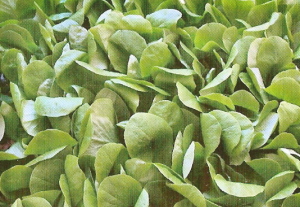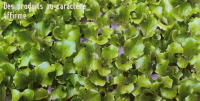Languedoc Salads and Vinaigrettes


The choice of salads is quite astonishing!
In my experience, if you ask a British person in the UK to bring a salad to a BBQ, you could be disappointed. They might come with a small bag of Marks and Spencer’s washed lettuce. Or if they take the time to make something, it could be just a bowl of washed lettuce (maybe with some tomatoes). Or perhaps it will be a cold rice salad. For to the British, in general, this is what salad means – lettuce served with mayonnaise or salad cream. And this is usually an “iceberg” lettuce – heavy, thick and crispy. Not very interesting, not very exciting.
Maybe I just mixed in the wrong circles!
However, salad in this part of France is an entirely different experience to almost anything you might be used to in the UK. In the Languedoc, if you ask for a salad you could be served with any variety of different types of salad:
• a salad Niçoise, (with green beans, anchovies, boiled eggs, tomatoes, olive oil, maybe capers)
• a Greek salad (feta cheese, cucumbers, tomatoes, onions, olives, herbs and olive oil),
• a Laitue salad from the Côte d’Azur (sea lettuce, anchovies, tomatoes, onions, hard boiled eggs, radishes, peppers)
• Salads as an entrée which involve large tomatoes stuffed with peppers (tomatoes farcie), or other exotic things done with salad, meats, courgettes, onions and herbs, different types of lettuce leaf, different types of fish, salmon, trout, etc.
However, usually a salad prepared at home will be no more complicated than lettuce, tomatoes, cucumbers, soft Cévennes onions, and a homemade vinaigrette. But this will taste superb. It will be delicious, light and the perfect starter to the meal ahead. In France the vinaigrettes are essential to the salad, and they wouldn’t dream of serving a salad without some form of dressing. What could be a better start to a meal on a warm, sunny evening with friends?
Natural Ingredients:
The key to a good salad seems to be good quality natural ingredients and excellent vinaigrettes or dressings. Of course, the Midi is also known for its delicious ripe, locally farmed tomatoes in summer, which contrasts with the hard, tasteless expensive red things that are sold all year round in UK and US supermarkets and imported from other parts of the world. But also, it has to be said the lettuces are exceptional.
Lettuces found in Languedoc:
There are various different types of lettuce grown locally in the Languedoc, and each of them has a delicate and light texture and taste, making them ideal for salads. These can be readily found at local markets.
Batavia
Feuille de Chêne
Chêne Blonde
Frisée
Laitue Pommée
Scarole
Lollo Rouge or Blond
Rougette
Mâche
Roquette de Provence
Mesclun Pissenlit(dandelion)
Cresson (cress)
Benefits of lettuce:
Weight loss, calming, vitamins and minerals!
Did you know that a salad at the start of a meal is reputed to help with weight reduction? One study in the US found that eating a salad at the start of a meal reduced the consumption of calories overall. The fibres help to produce a feeling of pleasant satiety that reduces excess consumption during the meal, but also excites the taste buds. Similarly, did you know that the lettuce is not only extremely light on calories, but also packed with complex vitamins that are essential for good health.
Frisée, Le Pissenlit, and Le Cresson and La Mâche are the local varieties richest in folic acid (B9), the vitamin that helps renew the body’s cells and keeps you looking young! La Laitue, Les Feuilles de Chêne, Roquette, Scarole, Batavia are really rich in vitamin C and other vitamins of the Vitamin B group.
Lettuces are also rich in minerals, containing iron, phosphorus, magnesium, iodine, magnesium, zinc, sodium, and copper. Lastly, lettuce is know medically for containing Lactucarium, which has the properties of calming nerves and aiding rest and sleep.

Some Salad Recipes:
Greek Salad – serves 4-6
Mix together 4 beautiful Midi tomatoes in season, sliced into quarters, with half a cucumber sliced and one mild onion thinly sliced and a red, or orange pepper, sliced. Sprinkle over the top a handful of black olives (green will also do) with small pieces of good quality feta cheese thinly cut or chopped.
Sprinkle with some oregano, and season well with pepper and a little salt. Then drizzle virgin olive oil over the salad. Consume within a couple of hours.
Bon appétit!
French Vinaigrette:
I thought I already knew how to make a decent French dressing before I came to the Midi, I mean, how difficult can it be? I was pretty happy with my results, until after several wonderful salad experiences it occurred to me that my dressings were just nothing like these!
So, I took the time to ask over dinner one evening how you make a make a decent French dressing. This is what my French friends told me –
1) Pour a measure of vinegar into a glass and add salt ( preferably with Fleur de Sel de Camargue, which is salt from the Camargue. This has a richer taste than industrially produced salt), mix together well.
2) Add a teaspoon of mustard and mix well.
3) Add a little lemon juice and mix well.
4) Little by little add the virgin olive oil (two spoons of oil to one of vinegar), mixing constantly to blend the oil and vinegar together. They should not separate afterwards.
5) Season with salt and pepper, and adjust to taste.
You can also add a little crushed garlic and a couple of torn basil leaves if you wish.
Variations:
Add some Roquefort that you’ve crushed gently with a fork, and some crushed nuts and crushed red pepper berries (called “baies de poivre rouge” available at markets).
Salad Dressing
This recipe was enthusiastically recommended to me by an American friend who has recently moved to the Gard, and whose French wife and mother-in-law have been introducing him to local French recipes and methods of cooking. This is his favourite salad dressing.
1) Take a glove of garlic and crush it against one of those little garlic crushing plates they have here, to bring out all the juices and fibres. If you don’t have a plate, just crush in a mortar and pestle.
2) Mix the garlic with salt from the Camargue.
3) Add virgin olive oil and mix.
4) Add half a teaspoon of mustard and mix.
5) Add a little nut oil. This is in fact “Huile des Noix”, and is walnut oil. Available in the supermarkets.
6) Season, mix and drizzle over the salad.
Very tasty, delicious!
Variations:
Replace the “Huile des Noix” with “Truffle Oil” (Huile de Truffes). This can be bought (at a price) locally from Uzés, or many of the Languedoc’s indoor or outdoor markets. Truffle oil will give it a distinct and delicious flavour.
Add a little chopped Roquefort instead of the nut oil, to add piquancy.
Other Dressings:
Basic:
Mix the juice of a lemon with some virgin olive oil and season with salt (Fleur de Sel de Camargue, preferably) and some freshly ground pepper.
Simple:
On a salad of Mâche(watercress), add a drizzle of virgin olive oil, a drizzle of walnut oil, and either Cider vinegar (available at Supermarkets) or Balsamic Vinegar. This will bring out the freshness of the green colour.
Wines:
You don’t usually serve a separate bottle of wine for a salad, but if you want something to go with the salad, it’s best to choose a Rosé or a white.
Share to: Facebook Twitter LinkedIn Email
More in cooking, courses, health, legal, markets, summer, wine
By FrenchEntrée
Leave a reply
Your email address will not be published. Required fields are marked *



